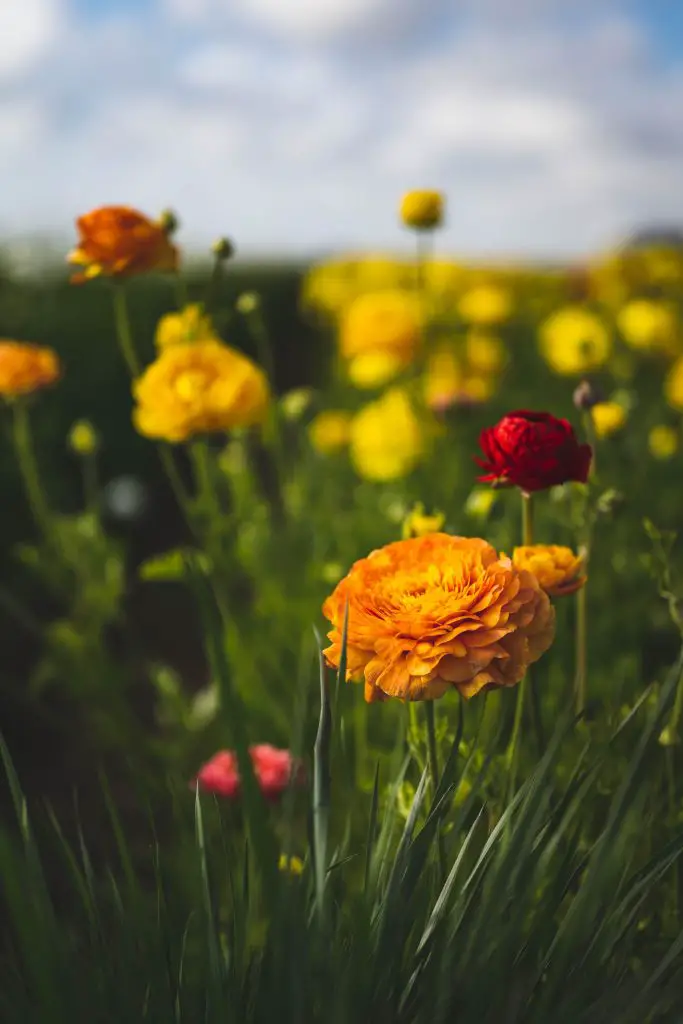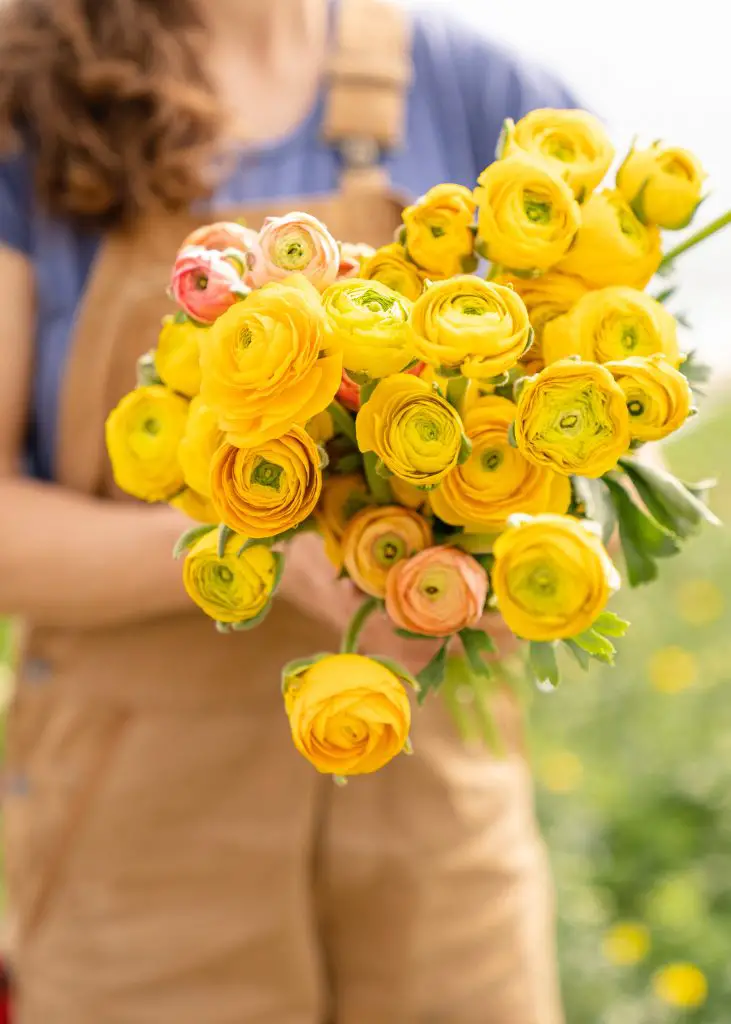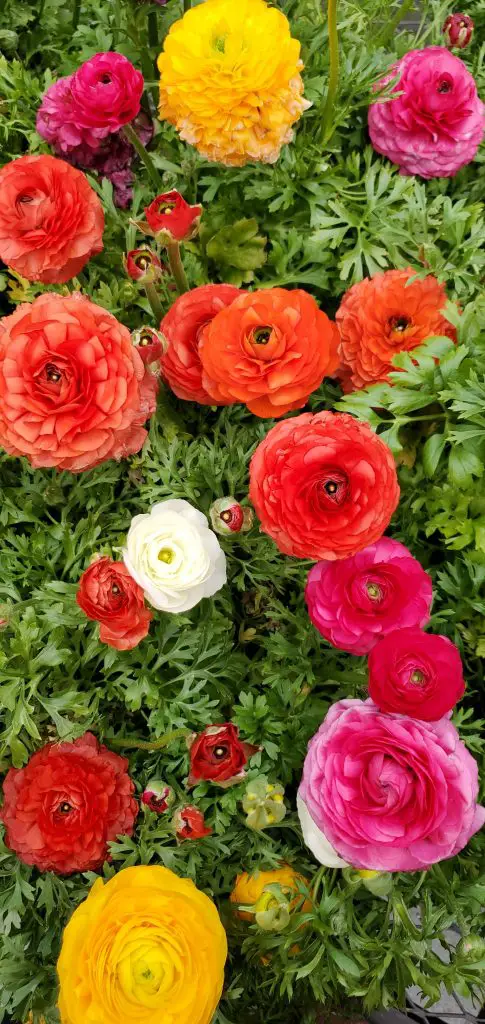Do Ranunculus Spread? Are They Invasive? Ranunculus are a popular ornamental flower that is commonly grown in gardens however if you have not grown the plant before one of the most common questions people have is are they an invasive plant? And will I regret planting them?
Ranunculus are genus that generally does not spread significantly unless you have one of the following three species; Creeping Buttercup (Ranunculus repens), Bulbous Buttercup (Ranunculus bulbosus), and Meadow Buttercup (Ranunculus acris).
All 3 species are widespread throughout places such as Northern Europe, where they are native, however, the Creeping Buttercup, in particular, is known to have extremely tough and tenacious roots and is on the invasive plants list of many countries. But these three species are generally not the ones sold in garden centres therefore you are generally safe to plant ranunculus purchased commercially.

Where Can You Grow Ranunculus
Ranunculus plants can be grown in a wide range of climates, however, they are only hardy in zone 7 or higher. In cooler locations, Ranunculus are generally recommended to be planted in early spring to mid-spring depending upon the particular location and which you live.
In zone 7 or above, the other key consideration is the soil conditions as Ranunculus prefers a free draining soil because if they are exposed to damp soil for too long they have the potential to rot.
When To Plant Ranunculus
Ranunculus corms are plants that can tolerate cold conditions but the corms should never be allowed to freeze, conversely, once the temperature gets above approximately 70°F to plant will cease to flower. This means that in regions that have cold winters and hot summer’s the timing of the planting is quite crucial to ensure that you get the most out of the flowers.
Generally, ranunculus should be planted approximately 4 to 6 weeks prior to the last frost when temperatures are no longer cool enough to freeze the corms. To ensure that you get the longest possible flowering period one of the practices that are recommended is to pre-germinate the corms indoors to ensure that they have started to shoot and develop roots before they even go outside.

The best way to do this is to fill a seed tray with damp potting mix that is not too wet. The corms should be placed into the potting mix just below the surface at a spacing of approximately 3 inches or so. The tray can then be stored in a cool dark location that has relatively cool temperatures but is not freezing.
The Ranunculus should be allowed to remain in this location for approximately 2 weeks which will be enough time for you to see small sprouts at the top of the corm and spindly white roots at the bottom.
Planting Ranunculus Out Into The Garden
When planting the ranunculus out into the garden they need to be placed in a sunny location that has soil that is rich, moist, and free-draining. The corms should be planted out approximately 6 inches apart at a depth of around an inch and a half. Once planted a thick layer of mulch should be applied to the garden bed to suppress weeds and retain moisture.
Once the plants are in the ground they will typically take around 2 to 3 months to begin to produce flowers and the flowering period will typically last around 4 to 6 weeks. However, this is highly dependant upon the specific nature of your climate as temperatures above 70 to 75°F will result in the end of flowering.

What To Do With Ranunculus Once The Flowering Period Has Finished
To extend the flowering period as long as possible it is advisable to deadhead the flowers once they begin to droop. However, once flowering ceases it is important to leave the foliage to die back naturally as this will feed the corm for the following year.
In locations that are relatively warm Ranunculus can be left in the ground year-round provided that the soil is relatively dry. However, in locations where it is too cold for the Ranunculus to survive the winter they need to be dug up.
This is best done when the foliage has completely died back and the corms are starting to dry up a little which typically occurs in mid to late summer. To remove them from the ground use a hand trowel and gently lever them out from below to avoid causing any damage.
Once the corms are removed from the soil they can be stored indoors provided that they are sufficiently dry. They are generally easy bulbs to store as they do not require any special treatment other than ensuring that the bulbs do not freeze.
The main thing is to ensure that the corms remain in a well-ventilated container to avoid any potential risk of mold forming.
I hope you found this article useful and have great success growing Ranunculus flowers at home in your garden. If you have any additional comments or questions please leave them in the section below.
Relevant Articles
How To Tell When Daffodils Are Ready To Harvest?
Are Daffodils Edible? Are They Safe To Eat?
What To Do With Tulips After They Bloom?
Do Tulips Bloom More Than Once in the Same Season?
